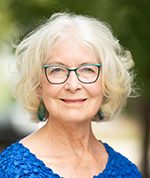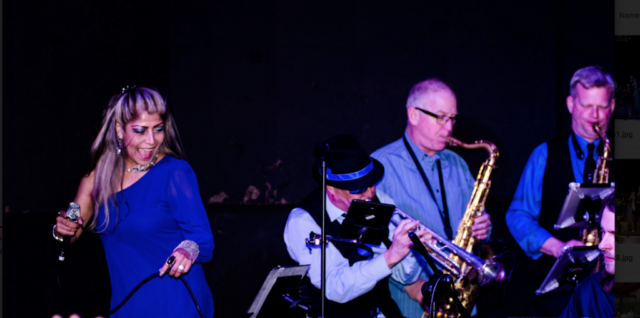
If your organization is planning an event of any kind, please email Caitlin at [email protected].
VIRTUAL EVENTS
Christine Buckley in Conversation with Brigitte Mars, 5 p.m. Thursday, July 30 via Zoom.

Community herbalist Christine Buckley, author of Plant Magic: Herbalism in Real Life, will join her former neighbor and Boulder herbalist, Brigitte Mars, on Thursday, July 30 for a conversation about the easily accessible, common plants found in our public parks, yards and between the cracks in the sidewalk — many of them weeds. Common medicinal plants are the secret ingredient in crafting simple and delicious botanical therapies at home to care for ourselves and our communities. Tickets for this event are $5 (plus a small convenience fee) and are available on Eventbrite.
Longmont Museum Virtual Summer Concert: Quemando. 7:30 p.m. Thursday, July 30 via Facebook.
Enjoy free, live tunes in the comfort of your own home, backyard or wherever you have access to Facebook. The Longmont Museum is livestreaming concerts from Stewart Auditorium direct to your phone or computer. Known as one of Colorado’s hottest salsa bands, Quemando brings infectious live energy to each show, playing music by traditional and contemporary artists, including Celia Cruz, Marc Anthony and Gloria Estefan. This 10-piece combines the style of salsa music with the classic pop of legends like Frank Sinatra and The Beatles. Visit the museum’s Facebook page at 7:30 p.m. on the night of the concerts and click on “videos” to join.
ArtWalk Longmont. Saturdays through Sept. 12.

ArtWalk is back and ready to give you and your family something fun and socially distant to do on Saturdays through Sept. 12 (in person… nothing virtual about it). With a unanimous blessing from City Council, Downtown Longmont was able to enlarge outdoor areas and pedestrian spaces on Main Street to grow outdoor dining and shopping areas for more safety during ArtWalk. Firehouse Art Center will offer creative activities (for kids and adults), both as entertainment and as art-making opportunities, during scheduled times on the weekend. Enjoy outdoor music and artist booths on the upcoming ArtWalk on Aug. 1, from 5-8 p.m. Please follow safety regulations, wear masks and practice social distancing throughout the event.
Shoes & Brews, Skechers Performance, and Oskar Blues Brewing present: The sixth edition of the CollaBEERation 5k & Brew Fest Virtual Edition. Aug. 1-2 via Facebook.

The sixth annual CollaBEERation 5K and Brew Fest is a little different this year. The race course has been set-up and marked for mileage by the Shoes & Brews crew for you to hit whenever it works for you, or blaze your own 5K on your favorite trail or right out your front door. There’ll be prizes for Sweatiest Selfie, Most Epic Run Course, Best DIY Finish Line, Best After-Race at Home Party, Earliest Riser and more. Packet pickup at Shoes & Brews is open through Aug. 1, and your race entry includes a race-customized run hat, race bib, race patch, and a swag bag filled with goodies from S&B and other partners. You’ll also receive special discounts during the weekend at Shoes & Brews, including sales and full priced items.
Boulder Virtual Artist Critique. 11 a.m. Saturday, Aug. 1 via Zoom.
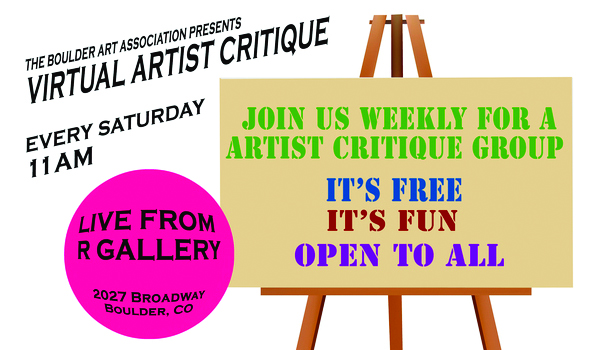
Broadcasting live from R Gallery in Boulder, Rick Dallago and Ed Narvaez host a virtual artist critique each Saturday at 11 a.m. The works of five local artists are chosen for critique by fellow artists via Zoom. All are welcome to submit work, participate and converse with each artist about process, technique, sources, inspiration, marketing, etc. Critiques will be positive, respectful and constructive. All forms of expression are welcome: painting, photography, dance, music, sculpture, quilting, acting and storytelling. After registering, you will receive a confirmation email with information on how to join the meeting and how to submit work for critique.
Fundraiser for NAACP Boulder County. Sunday, Aug. 2-Monday, Aug. 3.

Starting Aug. 2, CU-Boulder students Joshua Harmon and Bradley Hansen will walk from the Dr. Martin Luther King, Jr. Memorial in City Park, Denver, to Fort Carson, Colorado Springs, for a total distance of 84.6 miles to represent the 8 minutes 46 seconds George Floyd spent pinned down before he succumbed. Join Harmon and Hansen in their mission to raise racial awareness, honor the countless victims of racism and demand justice for the wrong-doings against the black community through the Step Forward Strive Forward fundraiser event. Your donation will directly benefit the Boulder County Branch of the NAACP (National Association for the Advancement of Colored People). For more information, contact Joshua Harmon: 720-357-4344 or [email protected].
ART
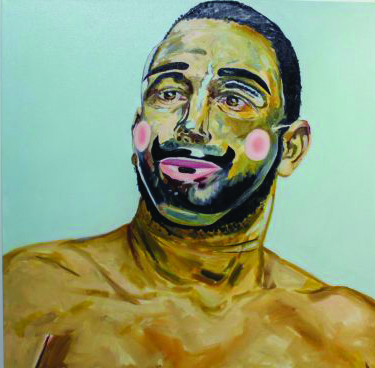
Naropa University Art Galleries Virtual Exhibition: ‘The More Things Change, the More They Stay the Same,’ by Michael Dixon. Through Aug. 6.
Michael Dixon is an artist working primarily with oil paint. Born in San Diego, California, Dixon received his MFA from the University of Colorado Boulder in painting, and a BFA from Arizona State University in painting and drawing. Dixon is currently a professor of art at Albion College. In a statement about the Naropa exhibit, Dixon writes: “As a bi-racial American, I have often felt out of place, excluded, and alone in majority white spaces. In black spaces, I have also felt different. What I have experienced is that I do not neatly fit into white culture or black culture but rather rest in the middle. I have conceptualized this unique ‘in between’ space based upon my experiences and the conversations I have had with other biracial people over the years. Exploring this ‘in between’ space has been the major focus of my creative work.” You can virtually meet the artist on Aug. 28 at 6 p.m.: naropa.zoom.us/j/94076148020
Norman Rockwell: Imagining Freedom. Denver Art Museum, 100 W. 14th Ave. Parkway, Denver, Hamilton Level 2, through Sept. 7.
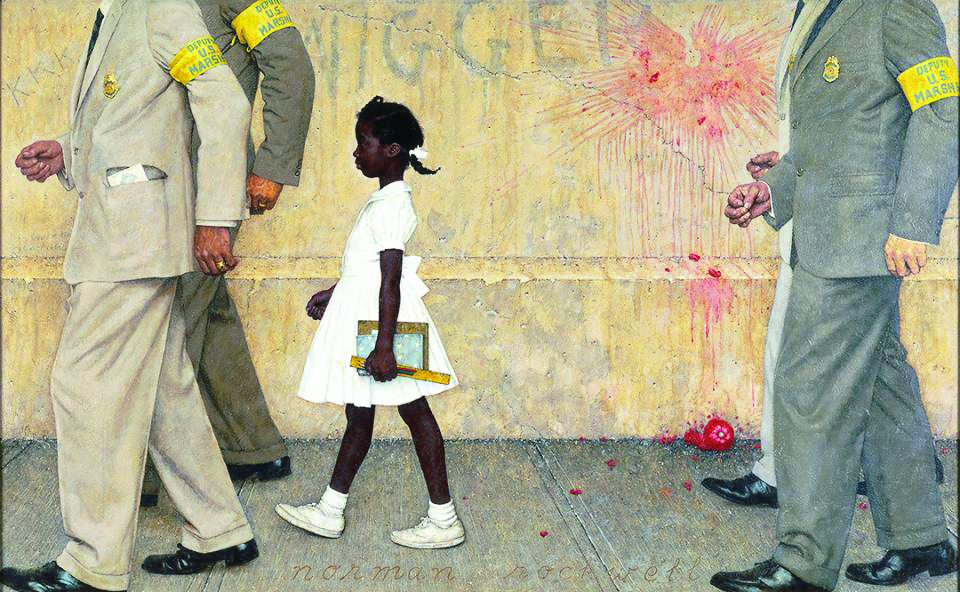
In the 1940s, Franklin D. Roosevelt’s administration developed the Four Freedoms — Freedom of Speech, Freedom of Worship, Freedom from Want and Freedom from Fear — to persuade Americans to support the war effort. Norman Rockwell, a renowned illustrator, was among the artists who took on the challenge to communicate visually the notions of freedom in support of the war efforts. The results were Rockwell’s popular Four Freedoms illustrations that depicted everyday community and domestic life that helped Americans rally for the defense of public freedom.
HOME VIEWING: Olivia de Havilland
by Michael J. Casey

Walking through life with you, ma’am, has been a very gracious thing. —They Died With Their Boots On
Like all great Hollywood stars, her story starts nowhere near the City of Angels. She was born Olivia Mary de Havilland on July 1, 1916, in Tokyo, Japan, to English parents: professor Walter de Havilland and actress Lilian Fontaine. One year later, sister Joan Fontaine followed. Years later, the two would feud publicly, but not until both had made their way to Hollywood, stole the hearts of the moviegoing public and won Oscars. Fontaine won one (for Suspicion, making her the only actor directed by Alfred Hitchcock to win the award), and de Havilland won two. But Fontaine won hers first. Fontaine also got married first, divorced first and died first. Such is the stuff of Hollywood rivalry.
Now de Havilland joins her sister once more: On July 25, 2020, de Havilland died in her Paris home from natural causes. She was 104.
Unlike sister Fontaine, de Havilland didn’t play her sexuality as slight. She was gorgeous, yes, but her defining characteristic was her “strong jawline,” as Roland Culver tells her in To Each His Own. It wasn’t just her jawline that was strong; it was the whole package. Jack Warner found that out first-hand when he tried to string her contract along. She sued him, sacrificing two viable years of work in the process, and won — setting a massive precedent in the endless struggle between actor and studio. Years later, Bette Davis remarked, “Every actor in the business owes a debt of gratitude to Olivia de Havilland for taking us out of bondage.”
From her first days on the stage at the age of 17 to her retirement five decades later, de Havilland was never far from the spotlight. She will always be remembered as Melanie Hamilton in 1939’s Gone With the Wind, perfectly poised and decidedly tough: Hollywood’s romantic notion of the antebellum belle.
The shadow of Wind looms large, but de Havilland is much more than Melanie Hamilton. She made eight pictures with Errol Flynn, the best of the bunch being the Technicolor-coated swashbuckler, The Adventures of Robin Hood. Few movies are this playful, and when de Havilland’s Maid Marian and Flynn’s Hood first meet, the frame crackles with electricity. She is radiant; he is dashing. It’s like a dream, only better.
In 1946 she starred in the wartime melodrama To Each His Own and won her first Oscar. The script, penned by Charles Brackett and Jacques Théry, is as twisty as a noir-soaked murder mystery, and de Havilland navigates every curve and contour with grace, command and heartbreaking poise. It’s spectacular, but somehow it’s been forgotten. A pity; movies this good deserve a legacy.
You can stream To Each His Own on NBC/Universal’s new service, Peacock. The Adventures of Robin Hood and Gone With the Wind you’ll find on HBO Max. And all three will be screened on August 23, on TCM, when the channel pays tribute to the star with a slate of 11 films, including her turn as the homely — or as homely as de Havilland could get — spinster, Catherine Sloper, navigating a harsh world full of harsh men in 1949’s The Heiress. It’s a stunning performance, maybe her best, and it netted her a second Oscar.
Heavy Rotation — Charley Crockett edition
Documenting Charley Crockett’s influences is like a history lesson in mid-20th century music. From the pioneer of electric blues to swamp pop to one of the precursors of hip-hop, Crockett digs deep into the American catalogue to find his own kind of country. Listen to the full playlist on Boulder Weekly’s Spotify.
“Wasted Days and Wasted Nights,” Freddy Fender
Rooted in traditional South Texas Tejano and conjunto, while blending blues, rock ‘n’ roll and country, Fender is somewhat of a hometown hero for Crockett. Also from San Benito, Fender became a national star with the re-release of this single in 1975, which Crockett covered on his second record, In the Night. “I found my voice singing my kind of country music, just like Freddy Fender did,” Crockett recently wrote in Texas Monthly.
“Lonely Days, Lonely Nights,” Johnnie Allan
Combining traditional Cajun folk, black Creole zydeco, honky-tonk country and New Orleans R&B, “swamp pop” originated in the Acadiana region of southern Louisiana. The sound quickly traveled into southeastern Texas in its heyday in the 1950s and ’60s, with regional hits like this one from Johnnie Allan — a midtempo lovelorn ballad with a steady drumbeat, rocking piano melody and bluesy horns.
“West Side Baby,” T-Bone Walker
When Crockett discovered T-Bone Walker’s music on the streets of New York City, it was revelation. “I realized there was this Dallas blues sound I had naturally been finding, and it seemed like the farther from home I got the more I was finding that sound,” he told Garden & Gun in 2019. Also from rural Texas, T-Bone Walker made a name for himself in the early blues scene as an innovator of electric guitar. His agile guitar riffs are prominently featured in this single from 1948.
“True Blues,” The Last Poets
Also while living in New York (performing with spoken word and rap group Train Robbers on the subway) Crockett was introduced to Abiodune Oyewole, who got his start with The Last Poets, an amalgamation of poets and musicians that arose out of the black nationalist movement of the 1960s and are seen as early influencers of modern hip-hop. By the time Crockett began going to his house for Sunday night dinners in Harlem, Oyewole was a Columbia professor and his philosophy left a lasting impression on the country singer. “He said that all his poetry had come as resolution to the conflict,” Crockett says. “He was the first place that anybody had ever vocalized that, in a way that resonated with me. And I immediately realized that I was coming from that place too and writing in that way.”
“Stop the World and Let Me off,” Waylon Jennings
“Everybody loves to praise the old school sound, but they really know nothing about it,” Crockett says, particularly the careers of pioneering outlaw country stars, like fellow Texan Waylon Jennings. Popularized in the 1970s, outlaw country originated to combat the commercial grasps of Nashville’s over-produced and polished country persona. Jennings came to define the subgenre, with his gritty country soul, but its the hard work he put in during the preceding decade that most inspires Crockett, typified by this 1966 single.


